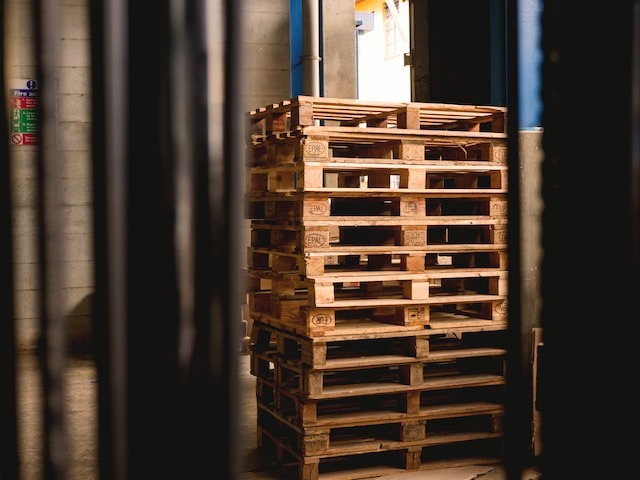In the past three years, businesses have dealt with various supply chain issues, mainly due to Covid-19 and the war in Ukraine.
But what exactly has been happening, and where do things stand now and in the future? And most importantly, how can businesses manage?
Supply chains since 2020
UK supply chains have been hurt by a multitude of issues.
First, there were staff shortages, which can be summarised by looking at HGV drivers. Indeed, according to the Road Haulage Association, there was a shortage of 60,000 HGV drivers before the pandemic; by August, that had increased to 90,000.
Part of the problem was an exodus of EU nationals working in the UK because of Covid-19 and Brexit, with the UK’s EU national HGV driver numbers falling between March 2020 and March 2021 by 37% — compared to 5% for their UK equivalents.
But workers across the supply chain were in demand; indeed, the bacon industry found itself in trouble when a lack of abattoir workers led to the destruction of thousands of healthy pigs. Meanwhile, thousands of workers across various sectors had to stay at home and self-isolate, reducing the amount of labour available on any given day.
The pandemic also saw a shift in demand from services to goods — on top of various incidences of panic-buying — applying more pressure to supply chains. At the same time, factory and port closures in Asia caused a global shortage of electronics, impacting everything from the supply of cars to home appliances.
In the past three years, businesses have dealt with various supply chain issues, mainly due to Covid-19 and the war in Ukraine.
But what exactly has been happening, and where do things stand now and in the future? And most importantly, how can businesses manage?
Supply chains since 2020
UK supply chains have been hurt by a multitude of issues.
First, there were staff shortages, which can be summarised by looking at HGV drivers. Indeed, according to the Road Haulage Association, there was a shortage of 60,000 HGV drivers before the pandemic; by August, that had increased to 90,000.
Part of the problem was an exodus of EU nationals working in the UK because of Covid-19 and Brexit, with the UK’s EU national HGV driver numbers falling between March 2020 and March 2021 by 37% — compared to 5% for their UK equivalents.
But workers across the supply chain were in demand; indeed, the bacon industry found itself in trouble when a lack of abattoir workers led to the destruction of thousands of healthy pigs. Meanwhile, thousands of workers across various sectors had to stay at home and self-isolate, reducing the amount of labour available on any given day.
The pandemic also saw a shift in demand from services to goods — on top of various incidences of panic-buying — applying more pressure to supply chains. At the same time, factory and port closures in Asia caused a global shortage of electronics, impacting everything from the supply of cars to home appliances.
And then there was Brexit, which complicated procedures to get European goods across the border, causing delays on the border.
Demand had been high during the pandemic, and didn’t slow when governments began scrapping lockdown measures. In fact, demand — especially for energy — boomed. A particularly high demand for gas and rising prices eventually restricted the supply of carbon dioxide, used in sectors from food and drink to nuclear and healthcare.
Tensions and eventually war in Eastern Europe exacerbated supply chains problems when Western governments switched the tap off on Russian gas, decreasing supply during a period of high demand.
The result? According to a survey in late 2022 of 400 mid-market business leaders, RSM UK found that 40% had switched to providers outside the UK. Meanwhile, a third had exited select supply lines, and a fifth had walked away from entire lines of business.
What’s changed?
Unfortunately, supply chain issues are expected to continue throughout 2023. Indeed, according to a report by Coupa Software, 91% of supply chain leaders saw the situation getting worse or not improving.
Respondents blamed the ongoing disruption on a combination of geopolitical uncertainties (54%), increased costs (51%), Covid-related issues (50%) and material shortages (42%).
Meanwhile, public procurement is set for a shake-up in 2023 with the Procurement Bill while businesses will have to check their supplies once the targets for the Environment Act are announced. All the while, labour shortages remain.
How can businesses adapt?
There are certain actions businesses can take to protect themselves from the worst issues posed by supply chain issues in 2023.
Visibility. Businesses can only manage their supply chains when they have a picture of each link. So, you should map out the suppliers, raw materials and systems you’re dependent on.
Scenario plan. With each link mapped out, explore various scenarios and plan out what you would do if any dependencies became compromised.
Leverage data and technology. One way to predict and prepare for disruptions is to leverage the data produced at all stages of the supply chain. It can also help optimise logistics and reduce waste so you can save money.
Prioritise training and preparedness. By providing good training across the organisation, a business can ensure that it can identify and mitigate risks, and respond to disruptions. Practising plans can be particularly effective during the training process.
Invest in your partnerships. Good relationships mean better communication and greater data sharing, which increases the visibility of the entire supply chain.
Analyse your suppliers. Certain partners are more risky than others. Simon Hart, lead international partner at RSM UK, suggests sourcing goods and materials from countries friendly to the UK’s geopolitical stance: if recent geopolitical events showed us, geopolitics can have a profound impact on trade.
Rely on supply chains to keep your business going? Reach out to us for assistance with managing yours.
